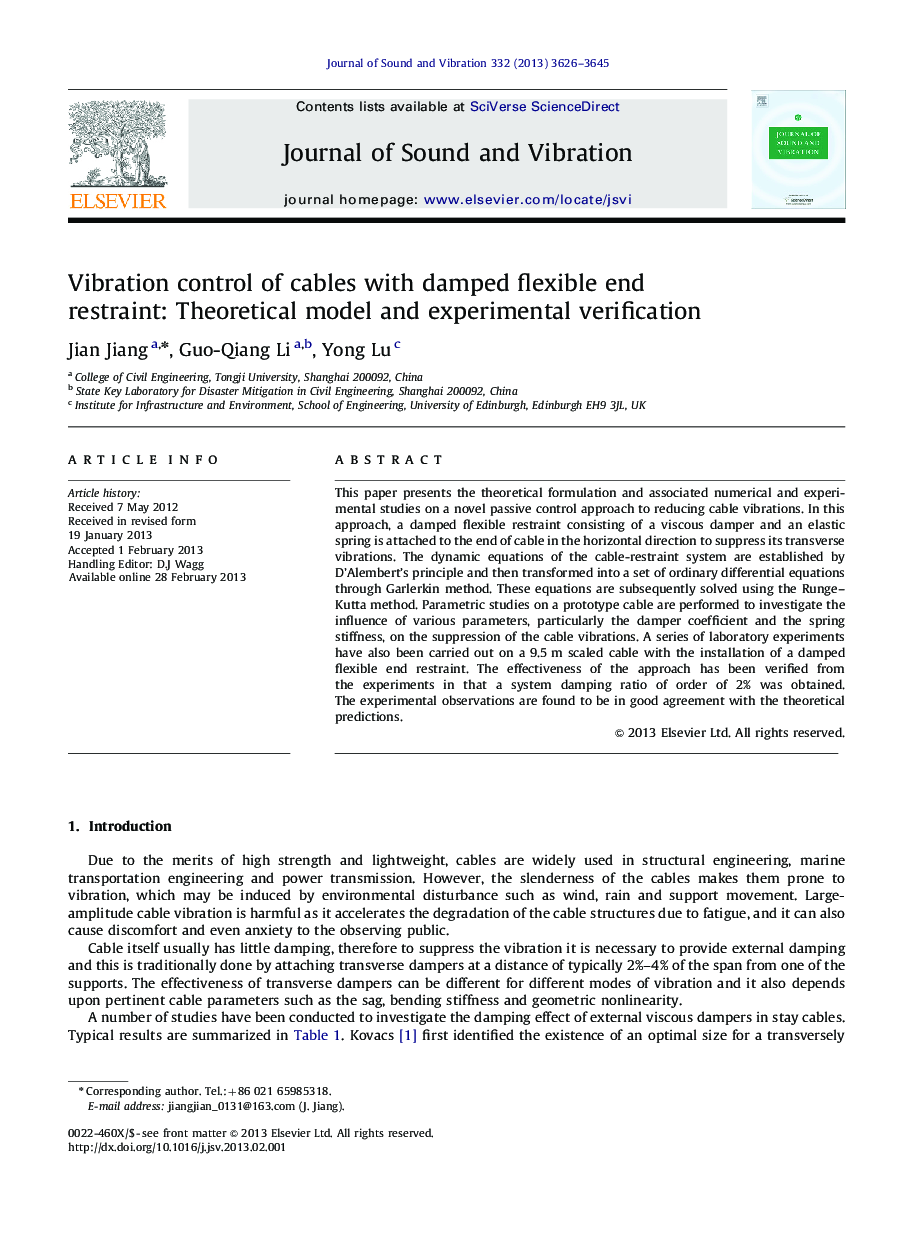| Article ID | Journal | Published Year | Pages | File Type |
|---|---|---|---|---|
| 287839 | Journal of Sound and Vibration | 2013 | 20 Pages |
This paper presents the theoretical formulation and associated numerical and experimental studies on a novel passive control approach to reducing cable vibrations. In this approach, a damped flexible restraint consisting of a viscous damper and an elastic spring is attached to the end of cable in the horizontal direction to suppress its transverse vibrations. The dynamic equations of the cable-restraint system are established by D'Alembert's principle and then transformed into a set of ordinary differential equations through Garlerkin method. These equations are subsequently solved using the Runge–Kutta method. Parametric studies on a prototype cable are performed to investigate the influence of various parameters, particularly the damper coefficient and the spring stiffness, on the suppression of the cable vibrations. A series of laboratory experiments have also been carried out on a 9.5 m scaled cable with the installation of a damped flexible end restraint. The effectiveness of the approach has been verified from the experiments in that a system damping ratio of order of 2% was obtained. The experimental observations are found to be in good agreement with the theoretical predictions.
